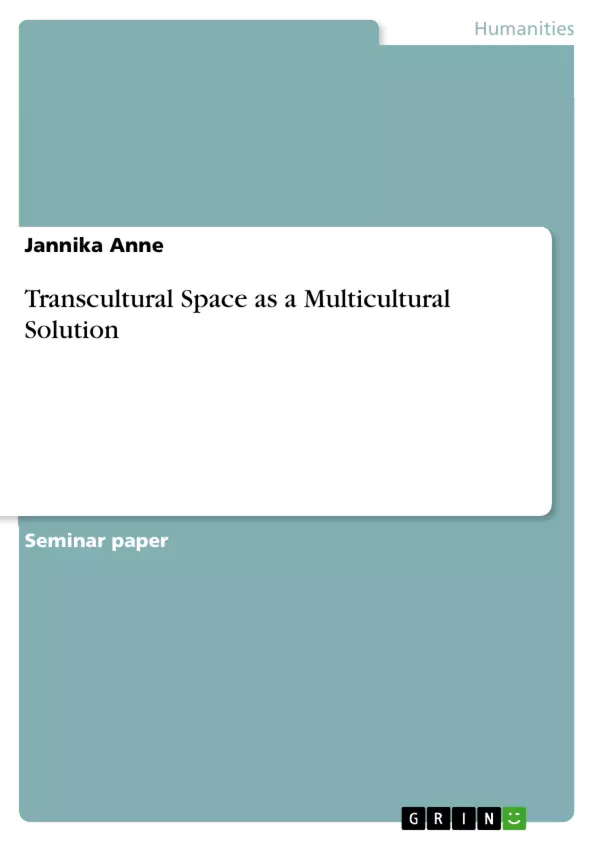The times when a politician could rely on references to a stable, homogenized notions of his place and hope to reach his citizens have long been over. Nowadays, the idea of a culture or identity of a place as unchanging, homogenous to the inside and clearly delimited to the outside, has not only been overcome, but also considered as invalid for any moment in time. This paper tries to outline a possible version of transcultural notions of space. The main point is to raise different perspectives and possibly find a solution for conflicts which concepts such as multiculturalism were not able to solve. First, this paper intends to define transcultural space as it might and would be interpreted in this work. This involves the characteristics, the areas where a transcultural perspective could be particularly useful and the attempt at a working definition. The second section copes with transcultural space in itself, the opportunities it offers, where it might contribute to place-making and urban research and also its limits which have to be mentioned. The third section applies transcultural space perceptions to place, namely Macau. A very short case study investigates if, where and in how far a place can be considered transcultural. The conclusion then summarizes and finalizes the paper.
Inhaltsverzeichnis (Table of Contents)
- Introduction
- Transcultural Space
- Characteristics, Potential and Possibilities
- Applicability: Macau as a "real world" example of transcultural space?
- Conclusion
- References
Zielsetzung und Themenschwerpunkte (Objectives and Key Themes)
This paper aims to explore a possible interpretation of transcultural notions of space, focusing on the characteristics, potential, and limitations of such spaces. It aims to provide alternative perspectives and potential solutions to issues that concepts like multiculturalism have not adequately addressed. The primary focus is on how transcultural space can contribute to place-making and urban research.
- Defining and characterizing transcultural space
- Transcultural space as a tool for place-making and urban research
- Examining the applicability of transcultural space in a real-world context (Macau)
- Comparing transcultural space to other related concepts like "liminal spaces"
- Addressing the dynamics of power relations and the role of actors in creating transcultural space
Zusammenfassung der Kapitel (Chapter Summaries)
The introduction establishes the context for examining transcultural space, highlighting the limitations of traditional concepts like multiculturalism in addressing the complexities of contemporary urban environments. It outlines the paper's objectives and structure.
The second chapter explores the concept of transcultural space, examining its characteristics, potential, and limitations. It draws upon theories of "soft" and "hard" urban elements, highlighting the role of social action in shaping place. This chapter emphasizes the dynamic and evolving nature of transcultural space, emphasizing the role of actors in creating and sustaining it.
The third chapter applies the concept of transcultural space to the specific case of Macau, investigating its potential as a "real world" example. It analyzes the place-making dynamics and social interactions within Macau, considering how they contribute to the formation of a transcultural space.
Schlüsselwörter (Keywords)
Key concepts explored in this paper include transcultural space, place-making, urban research, multiculturalism, liminal spaces, hybridity, social action, and the role of actors in shaping place. It also addresses the dynamics of power relations and the significance of individual and collective experiences in creating and interpreting transcultural space.
- Quote paper
- Jannika Anne (Author), 2014, Transcultural Space as a Multicultural Solution, Munich, GRIN Verlag, https://www.grin.com/document/285739



